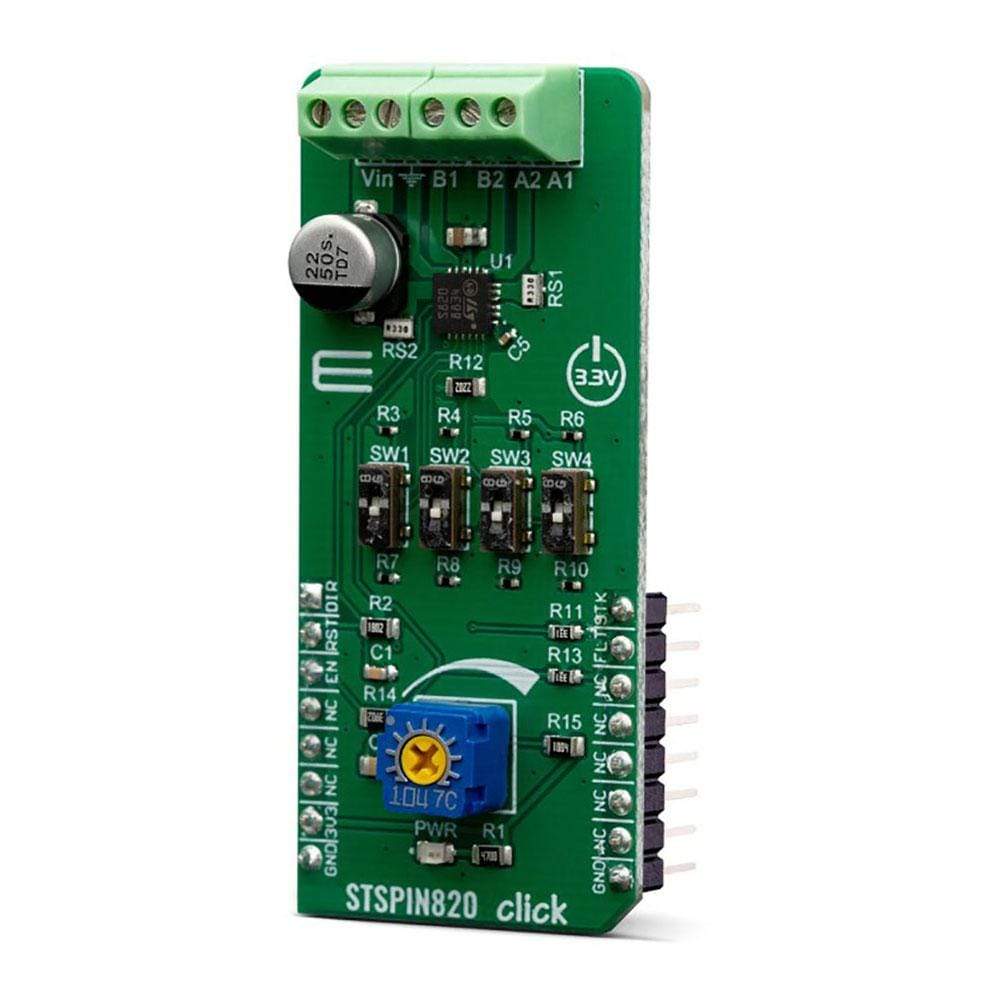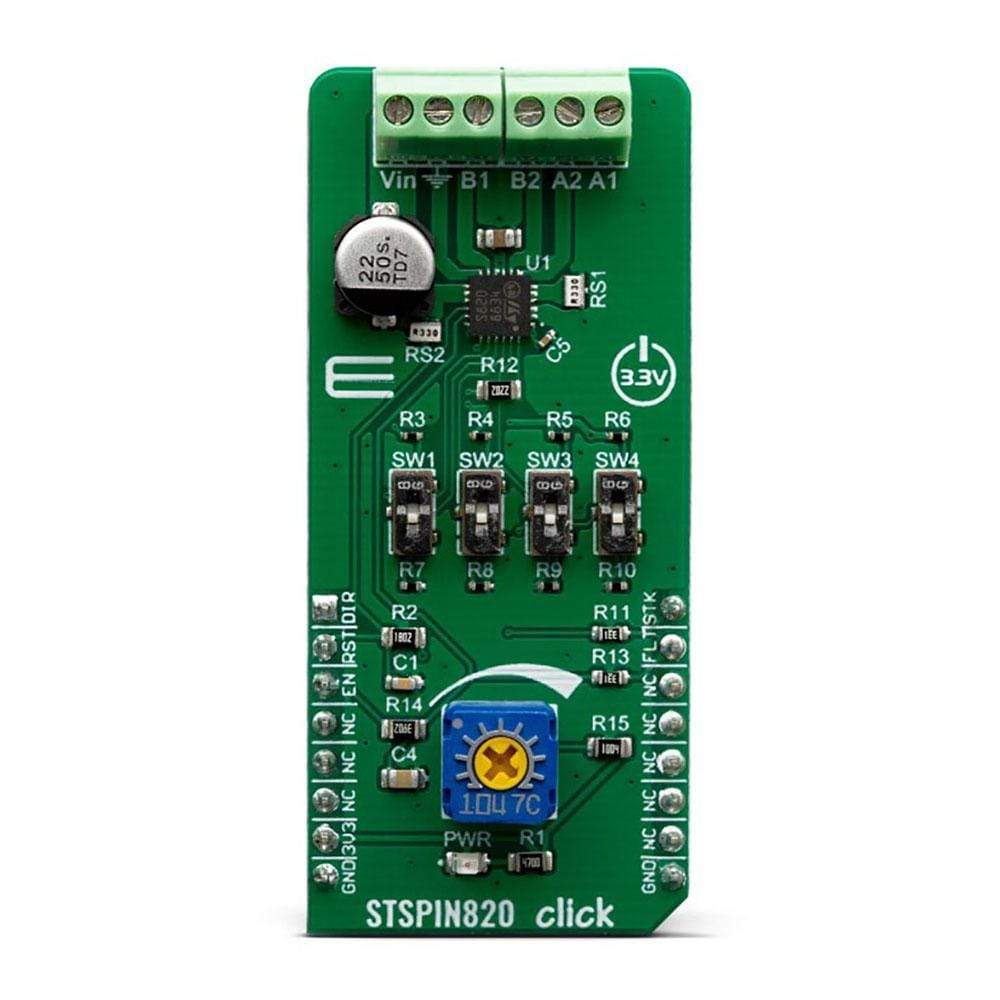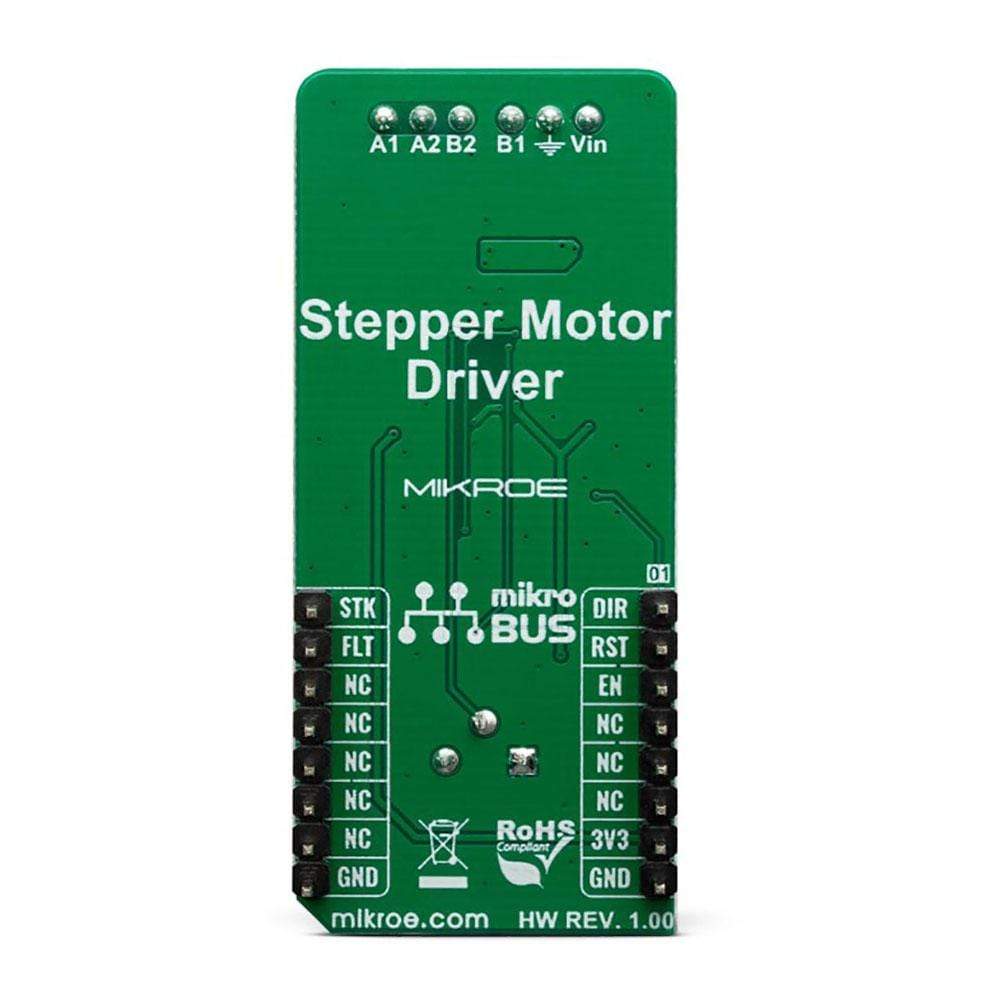


Overview
The STSPIN820 Click Board™ is a stepper motor driver with the PWM current control, selectable microstepping up to 256 microsteps, and a wide voltage range. It is based on the STSPIN820, a stepper motor driver from STSPIN8 series. Designed to be a bullet-proof solution for the new wave of demanding industrial applications, it integrates two full-bridges with low ON resistance, the control logic, and a full set of protection features, in a small 4x4mm QFN package. Its output stage implements the PWM current control with the fixed OFF time. The device can be used with the step motor voltage ranging from 7V up to 45V, and current up to 1.5A per bridge.
Downloads
Das STSPIN820 Click Board™ ist ein Schrittmotortreiber mit PWM-Stromregelung, wählbarem Mikroschritt bis zu 256 Mikroschritten und einem weiten Spannungsbereich. Es basiert auf dem STSPIN820, einem Schrittmotortreiber der STSPIN8-Serie. Es wurde als kugelsichere Lösung für die neue Welle anspruchsvoller Industrieanwendungen entwickelt und integriert zwei Vollbrücken mit geringem Einschaltwiderstand, die Steuerlogik und einen vollständigen Satz Schutzfunktionen in einem kleinen 4 x 4 mm großen QFN-Gehäuse. Seine Ausgangsstufe implementiert die PWM-Stromregelung mit der festen Ausschaltzeit. Das Gerät kann mit einer Schrittmotorspannung von 7 V bis 45 V und einem Strom von bis zu 1,5 A pro Brücke verwendet werden.
| General Information | |
|---|---|
Part Number (SKU) |
MIKROE-3544
|
Manufacturer |
|
| Physical and Mechanical | |
Weight |
0.024 kg
|
| Other | |
Country of Origin |
|
HS Code Customs Tariff code
|
|
EAN |
8606018715701
|
Warranty |
|
Frequently Asked Questions
Have a Question?
Be the first to ask a question about this.



